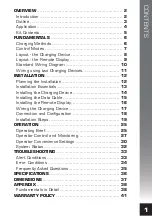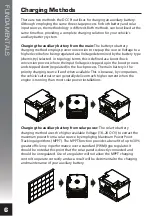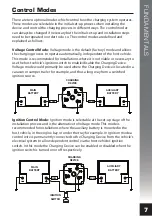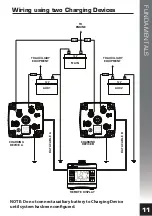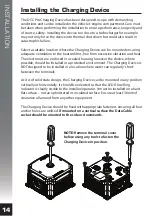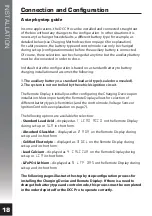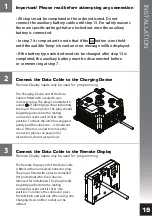
INSTALLATION
13
Installation Essentials
Common faults often arise as a result of the installation. A poor installation will
result in poor performance of the system, placing unnecessary stress (both
electrically and physically), on all the components involved. Furthermore, this can
result in safety issues such as breakdowns and in worst case scenarios even fire.
This is why we state that the DCC Pro should only be installed by a suitably
qualified tradesperson.
Please observe the following protocols when undertaking a dual battery
installation:
1.
To avoid Voltage drop, use correct wire gauge size according to the run length.
Using undersized wiring is the most common cause of Voltage drop. Copper is
expensive and it is tempting to reduce the cost of an installation by using smaller
gauge wire however this is detrimental to both performance and safety. Do not
be tempted!
2.
Use bolt-down midi style fuses. Do not use blade fuse holders. Many
off-the-shelf style blade fuse holders use poor quality materials. The metal
contacts cannot handle thermal cycling and quickly become loose, thereby losing
conductivity. Manual reset circuit breakers are acceptable but check for de-rating
factor under elevated temperatures.
3.
Use good quality copper compression lugs for all termination and correct
tooling to ensure proper crimping. Sub-standard crimping creates resistance in
the circuit which can produce a ‘hot spot’. Under heavy current, the heat
generated from this point can be enough to melt plastics. The high temperature
can also be conducted to other components causing failure.
4.
Terminate all negative wiring at a common grounding point. Bad grounding
creates resistance in the circuit resulting in Voltage drop and can be difficult to
diagnose if the circuit is not under load. Ensure that all grounding points
connected to the body/chassis have good electrical conductivity and are
protected from corrosion.
5.
Many installations use heavy duty connectors fitted in the circuit, often
between the DC DC charger and a caravan/camper for example. Ensure any
connectors fitted between the Charging Device and batteries are of high quality
and correctly rated for the wire size used. If a connector is required, we
recommend only Genuine Anderson brand. Poor quality connectors will result in
resistance in the circuit and a potential ‘hot spot’.



